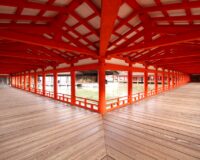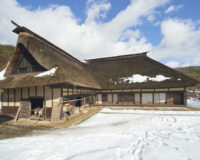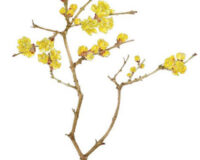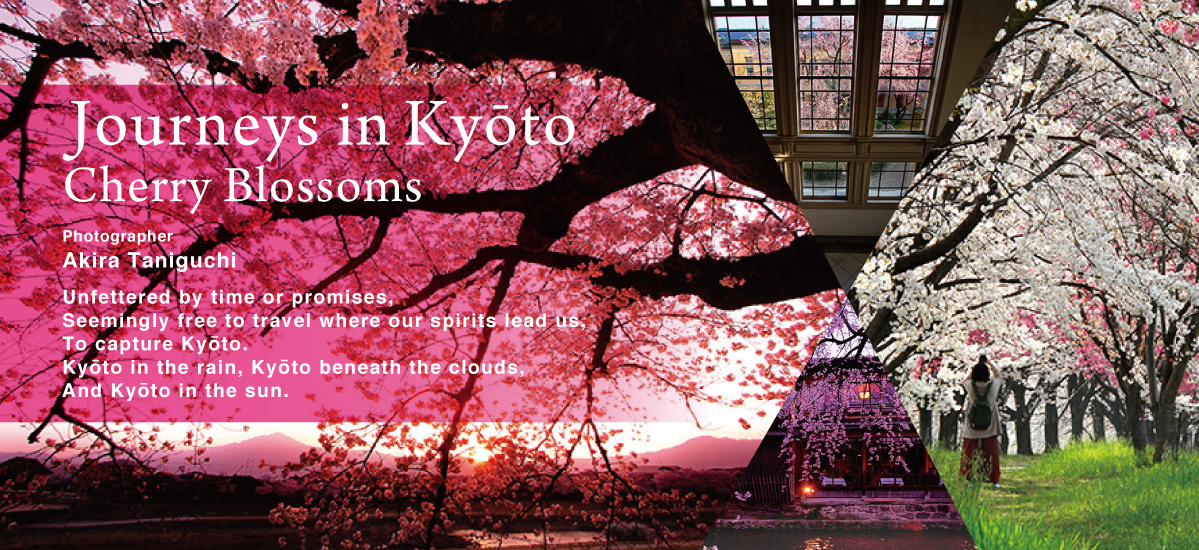
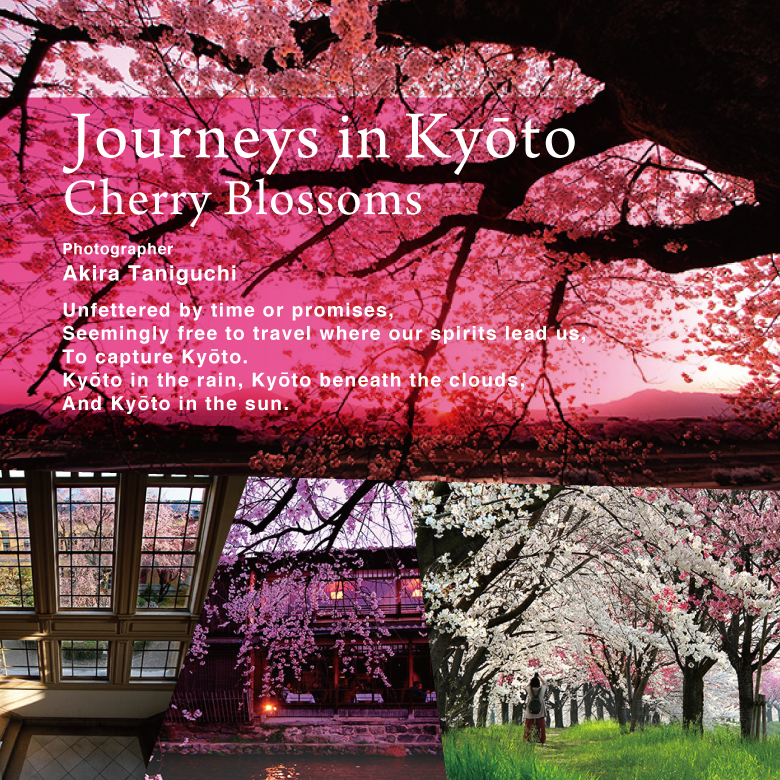
Unfettered by time or promises,
Free to travel where our spirits lead us,
To capture Kyōto.
Kyōto in the rain, Kyōto beneath the clouds,
Kyōto in the sun.
Photos : 谷口哲 Akira Taniguchi / Text : 中島有里子 Yuriko Nakajima / English Version : Judy Evans
Keyword : Shirakawa River / Katsura River / flowers / Journeys in Kyōto Series / Kyōto / photography / Cherry Blossoms / Gion / Kamo River
Spring Vista Framed by Renaissance Symmetry. Former Main Building of the Kyoto Prefectural Office
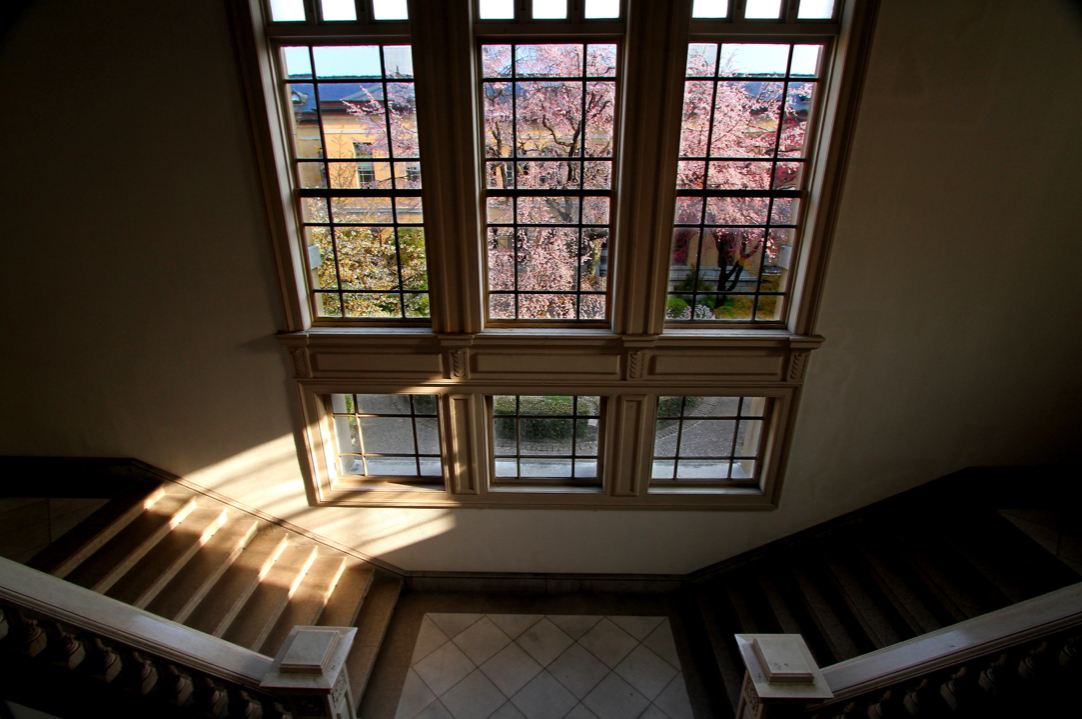
The Former Main Building of the Kyoto Prefectural Government Office was completed in December 1904 and was used as the main building until 1971. It is still used as prefectural office and meeting rooms today. Designed by Japanese architects, this European-style building features a classical Renaissance facade, with a Japanese aesthetic visible in the crafting of the interior. This is the oldest government building in Japan to have been in continual use, and that still retains its original appearance. The inner courtyard garden contains six sakura (flowering cherry) trees. Springtime brings many visitors, who come to enjoy this beautiful collaboration between nature and design.
The Splendour of Spring All to Yourself. Katsura River Kasenjiki Park
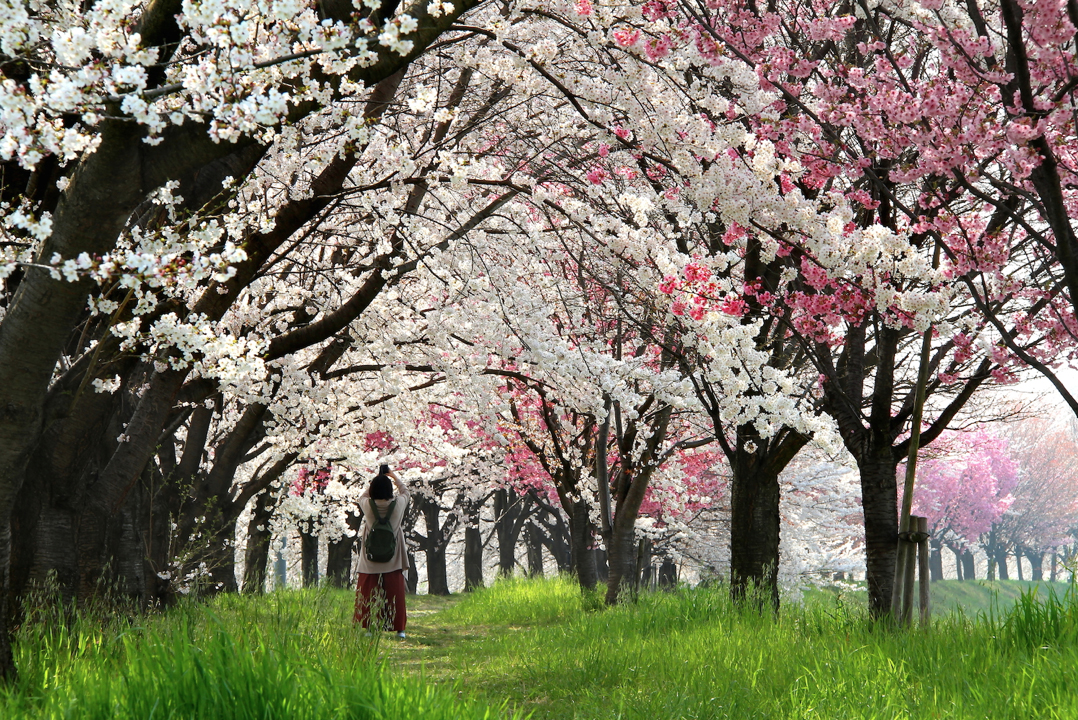
A small corner of the Katsura River, which flows through the Kyōto basin and is one of Kyōto’s largest rivers. Originating around Sasari-tōge Pass at the border between Kyōto’s Sakyo Ward and Miyama-chō in Nantan City, the Katsura River flows west through the Kameoka Basin then through the Hōzu Gorge and Arashiyama, before joining the Kamo River south of Kyōto. This massive river then joins up with the Kizu and Uji Rivers at the edge of Ōsaka Prefecture, to become Ōsaka’s mighty Yodo River. Continuing to display its beauty from season to season, the Katsura River was once the playground of royalty. Successive emperors of the Heian Period (794 – 1185) enjoyed boating here, and the river was once bustling with vessels transporting timber.
As if by appointment, the sun rises every morning and the sakura blooms every spring. The west side of Izumoji Bridge

Izumoji Bridge spans the Kamo River north of Kyōto Gosho (Kyōto Imperial Palace) and to the west of Shimogamo Shrine, on the boundary between Sakyō and Kita Wards. The home of the Izumo clan in ancient times, the name is said to derive from the Izumoiheno Shrine, now within the Shimogamo Shrine grounds. This spot, known both as Izumoji-guchi and Kurama-guchi is one of the seven guchi (entrances) of Kyōto, where the old highways that connected Kyōto to the surrounding areas entered the city. The old Kurama Kaidō highway led from here up to Kurama in the mountains to the north of the city. The bridge commands views of three mountains: Kitayama to the north, Hieizan to the east, and Daimonji-yama to the south-east.
Daytime pinks are lovely, but are even lovelier still with a gentle evening tint. Gion Shirakawa.
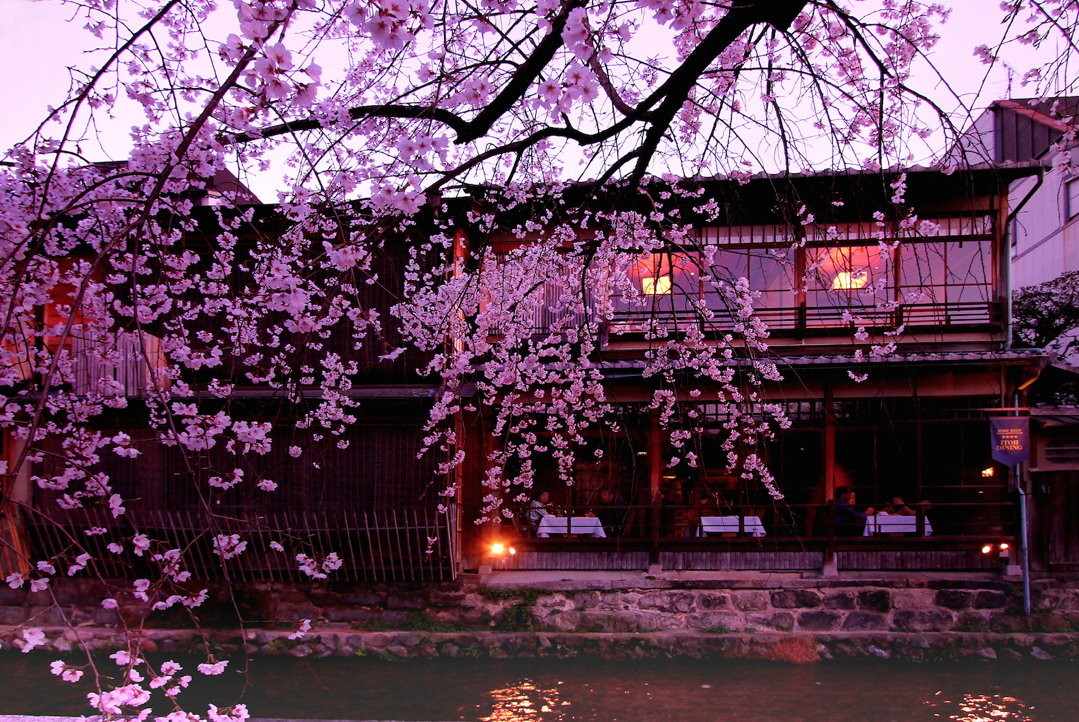
Flowing from Mount Hiei, the Shirakawa River passes through Gion, where rows of latticed machiya (traditional townhouses) line its cobblestoned banks. This, needless to say, is a popular sightseeing spot, and in spring the cherry blossoms bring an indescribable beauty to the scenery. Forty flowering cherry trees is not a huge number, but in addition to the popular Somei Yoshino variety, there are also graceful shidare-zakura weeping cherries and buoyant yama-zakura wild cherries. Cherry blossoms bathed in the light of gently swaying lanterns outside traditional restaurants, the soft murmur of the Shirakawa River, the sheen of wet cobblestones and a glimpse of a passing maiko (apprentice geiko/geisha) add a sense of refinement that can only mean Kyōto.



